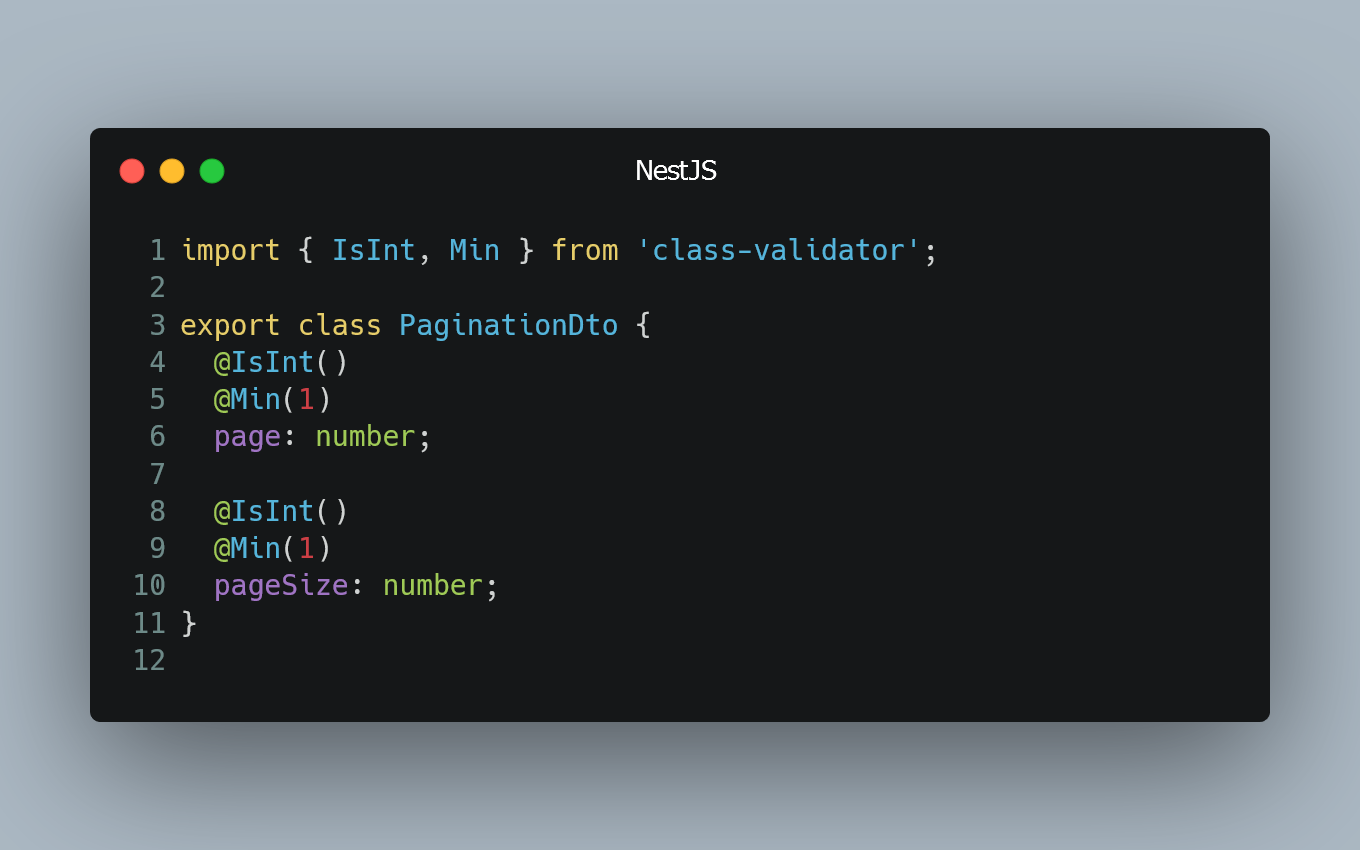
Pagination is a common requirement in APIs to manage large datasets. With NestJS and TypeORM, you can easily implement pagination to retrieve and display data in smaller, manageable chunks.
Setting Up the Database and TypeORM
First, make sure you have set up the database and TypeORM in your NestJS application. Ensure you have your entities defined and configured in the ormconfig.json or ormconfig.js file.
Defining Pagination Parameters
To implement pagination, you need to define pagination parameters such as the page number and the number of items per page. These parameters will be sent in the API request to specify which data to retrieve.
// pagination.dto.ts
import { IsInt, Min } from 'class-validator';
export class PaginationDto {
@IsInt()
@Min(1)
page: number;
@IsInt()
@Min(1)
pageSize: number;
}
In this example, we use a Data Transfer Object (DTO) named PaginationDto to define the pagination parameters. The page parameter represents the page number, and the pageSize parameter represents the number of items per page.
Implementing Pagination in the Controller
Next, implement the pagination logic in your controller. You can use the findAndCount method provided by TypeORM to retrieve paginated data.
// cats.controller.ts
import { Controller, Get, Query } from '@nestjs/common';
import { Cat } from './cat.entity';
import { PaginationDto } from './pagination.dto';
import { InjectRepository } from '@nestjs/typeorm';
import { Repository } from 'typeorm';
@Controller('cats')
export class CatsController {
constructor(
@InjectRepository(Cat)
private readonly catRepository: Repository<Cat>,
) {}
@Get()
async findAll(@Query() paginationDto: PaginationDto): Promise<Cat[]> {
const { page, pageSize } = paginationDto;
const skip = (page - 1) * pageSize;
return this.catRepository.find({
take: pageSize,
skip,
});
}
}
In this example, we inject the Cat repository from TypeORM using the @InjectRepository decorator. In the findAll method, we receive the PaginationDto as a query parameter. We calculate the skip value based on the page number and page size to skip the appropriate number of records in the query.
Sending Pagination Parameters
To use the pagination feature, send the page and pageSize parameters in the API request.
For example, to retrieve the second page with 10 items per page:
GET /cats?page=2&pageSize=10
The API will return the second page of cats with 10 cats per page.
0 Comment

